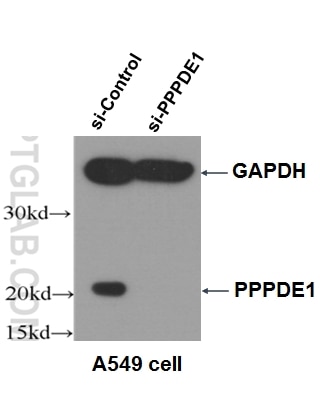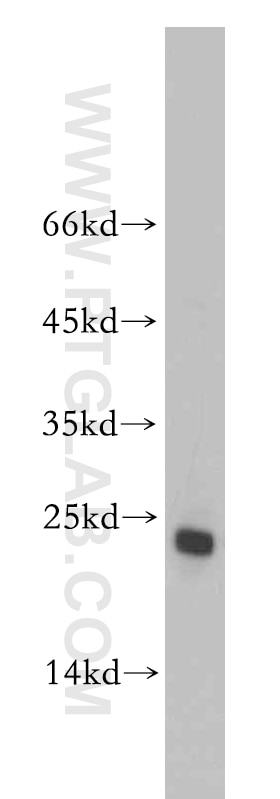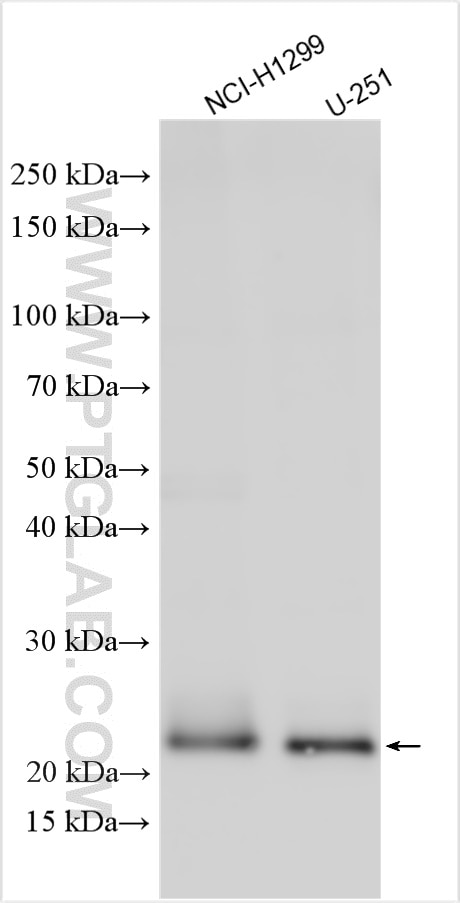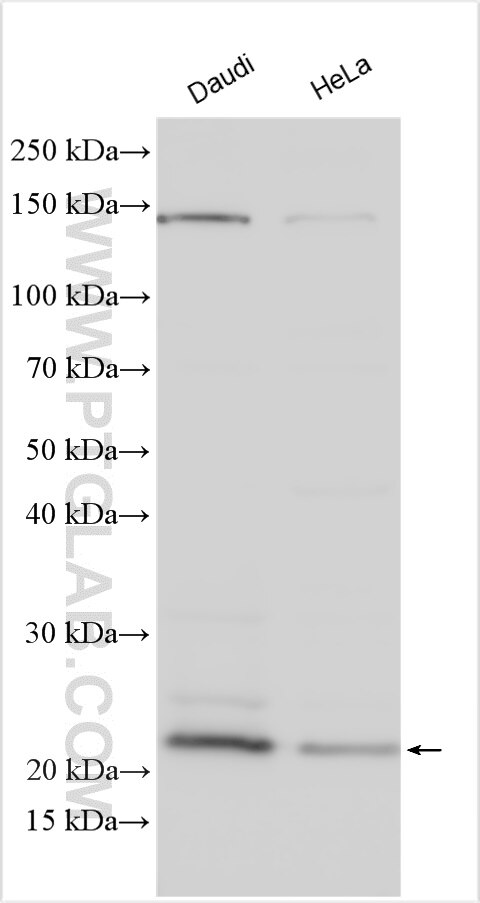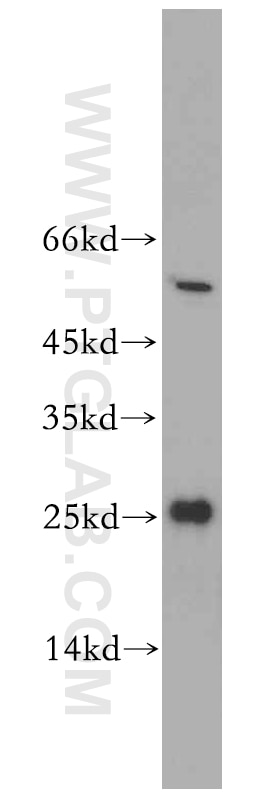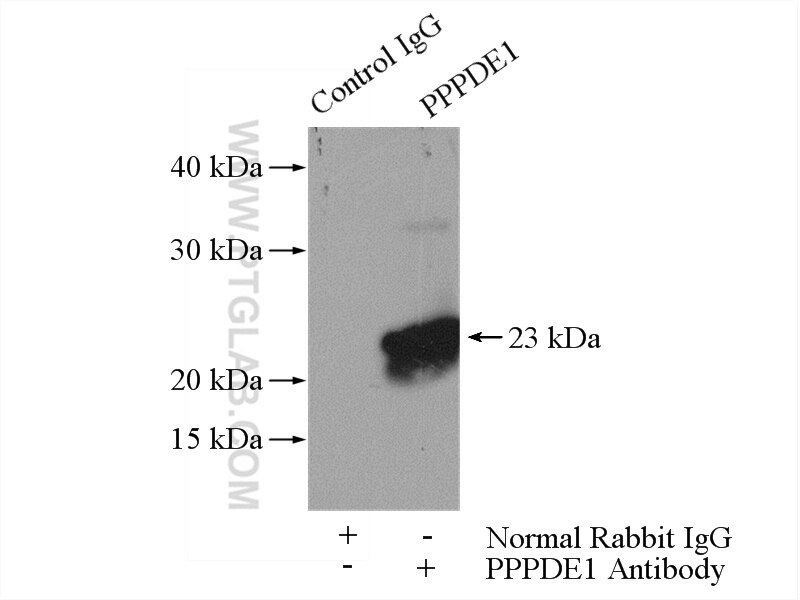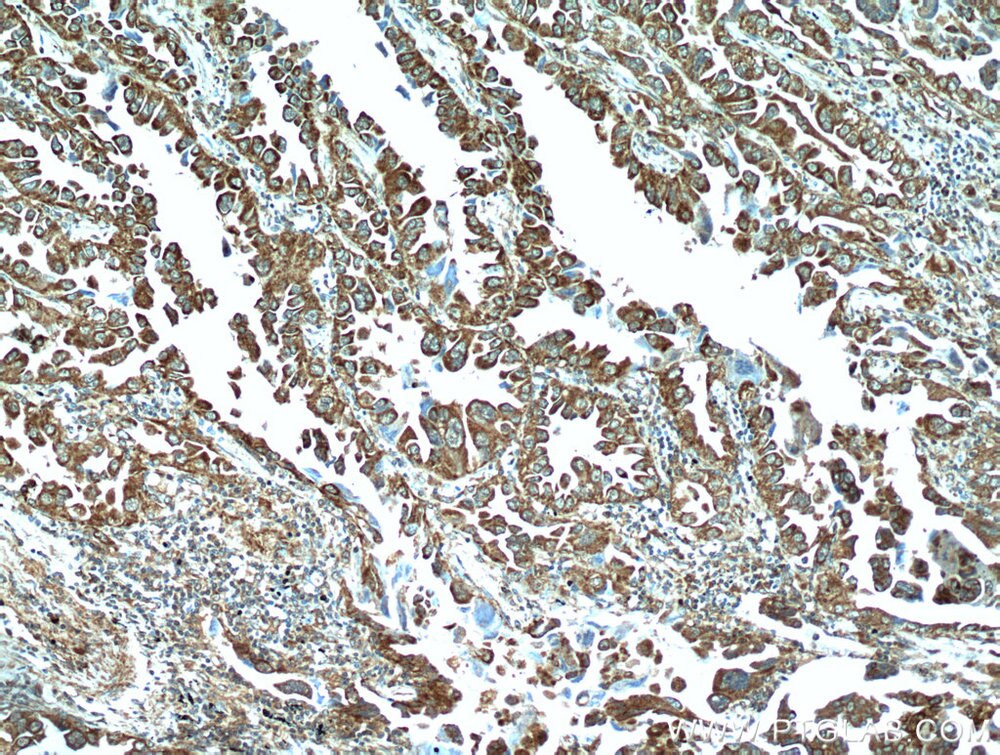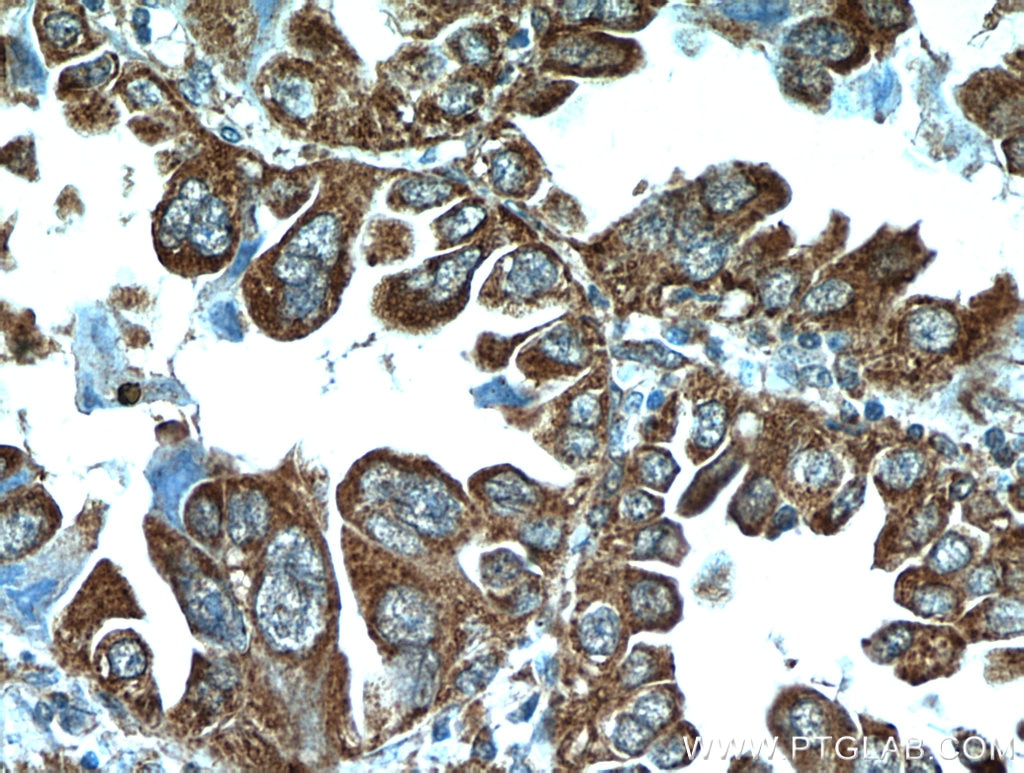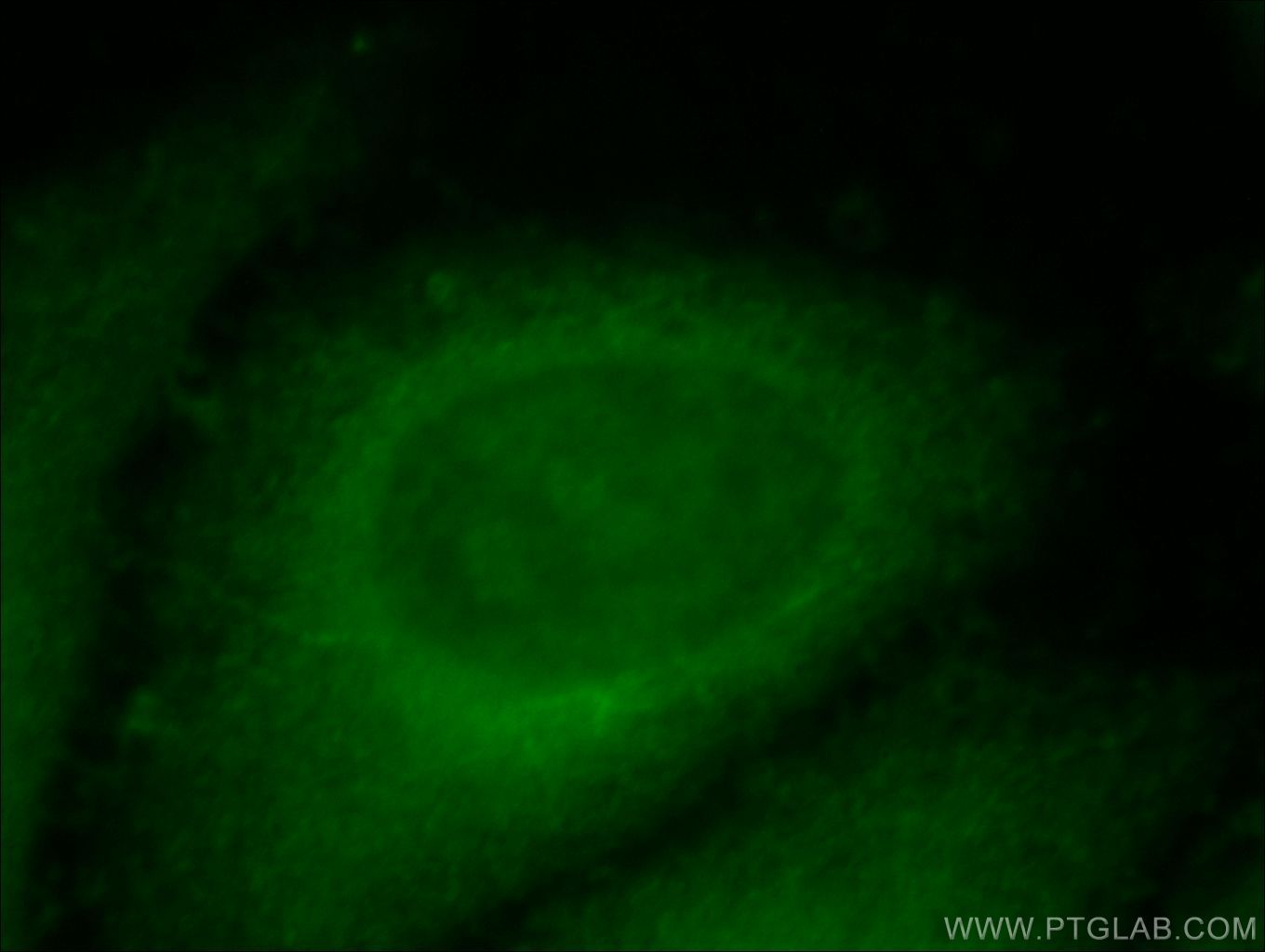- Phare
- Validé par KD/KO
Anticorps Polyclonal de lapin anti-PPPDE1/PNAS4
PPPDE1/PNAS4 Polyclonal Antibody for WB, IP, IF, IHC, ELISA
Hôte / Isotype
Lapin / IgG
Réactivité testée
Humain et plus (2)
Applications
WB, IHC, IF/ICC, IP, ELISA
Conjugaison
Non conjugué
N° de cat : 20517-1-AP
Synonymes
Galerie de données de validation
Applications testées
| Résultats positifs en WB | cellules HeLa, cellules A549, cellules NCI-H1299, cellules U-251 |
| Résultats positifs en IP | cellules A549 |
| Résultats positifs en IHC | tissu de cancer du poumon humain il est suggéré de démasquer l'antigène avec un tampon de TE buffer pH 9.0; (*) À défaut, 'le démasquage de l'antigène peut être 'effectué avec un tampon citrate pH 6,0. |
| Résultats positifs en IF/ICC | cellules HepG2 |
Dilution recommandée
| Application | Dilution |
|---|---|
| Western Blot (WB) | WB : 1:300-1:600 |
| Immunoprécipitation (IP) | IP : 0.5-4.0 ug for 1.0-3.0 mg of total protein lysate |
| Immunohistochimie (IHC) | IHC : 1:20-1:200 |
| Immunofluorescence (IF)/ICC | IF/ICC : 1:10-1:100 |
| It is recommended that this reagent should be titrated in each testing system to obtain optimal results. | |
| Sample-dependent, check data in validation data gallery | |
Applications publiées
| WB | See 6 publications below |
| IHC | See 5 publications below |
| IF | See 2 publications below |
Informations sur le produit
20517-1-AP cible PPPDE1/PNAS4 dans les applications de WB, IHC, IF/ICC, IP, ELISA et montre une réactivité avec des échantillons Humain
| Réactivité | Humain |
| Réactivité citée | rat, Humain, souris |
| Hôte / Isotype | Lapin / IgG |
| Clonalité | Polyclonal |
| Type | Anticorps |
| Immunogène | PPPDE1/PNAS4 Protéine recombinante Ag14352 |
| Nom complet | PPPDE peptidase domain containing 1 |
| Masse moléculaire calculée | 194 aa, 21 kDa |
| Poids moléculaire observé | 23 kDa |
| Numéro d’acquisition GenBank | BC004485 |
| Symbole du gène | PPPDE1 |
| Identification du gène (NCBI) | 51029 |
| Conjugaison | Non conjugué |
| Forme | Liquide |
| Méthode de purification | Purification par affinité contre l'antigène |
| Tampon de stockage | PBS avec azoture de sodium à 0,02 % et glycérol à 50 % pH 7,3 |
| Conditions de stockage | Stocker à -20°C. Stable pendant un an après l'expédition. L'aliquotage n'est pas nécessaire pour le stockage à -20oC Les 20ul contiennent 0,1% de BSA. |
Informations générales
PPPDE peptidase domain 1 (PPPDE1), also named as PNAS4, is a highly conserved gene ubiquitously expressed in various tissues. PPPDE1 has been identified as a novel pro-apoptotic gene activated during the early response to DNA damage which is thought to play a critical role in cellular function regarding the maintenance of genomic integrity. This antibody specifically recognized endogenous PPPDE1, which has been confirmed by siRNA test.
Protocole
| Product Specific Protocols | |
|---|---|
| WB protocol for PPPDE1/PNAS4 antibody 20517-1-AP | Download protocol |
| IHC protocol for PPPDE1/PNAS4 antibody 20517-1-AP | Download protocol |
| IF protocol for PPPDE1/PNAS4 antibody 20517-1-AP | Download protocol |
| IP protocol for PPPDE1/PNAS4 antibody 20517-1-AP | Download protocol |
| Standard Protocols | |
|---|---|
| Click here to view our Standard Protocols |
Publications
| Species | Application | Title |
|---|---|---|
Apoptosis PPPDE1 promotes hepatocellular carcinoma development by negatively regulate p53 and apoptosis. | ||
Exp Cell Res Upregulation of PPPDE1 contributes to anorectal malformations via the mitochondrial apoptosis pathway during hindgut development in rats. | ||
Biochimie Comprehensive analysis of expression profile reveals the ubiquitous distribution of PPPDE peptidase domain 1, a Golgi apparatus component, and its implications in clinical cancer. | ||
Biochem Biophys Res Commun PPPDE1 is a novel deubiquitinase belonging to a cysteine isopeptidase family. | ||
Pathol Oncol Res High Phosphorylation Status of AKT/mTOR Signal in DESI2-Reduced Pancreatic Ductal Adenocarcinoma. | ||
Oncol Lett Analysis of transcription profile to reveal altered signaling pathways following the overexpression of human desumoylating isopeptidase 2 in pancreatic cancer cells. |
